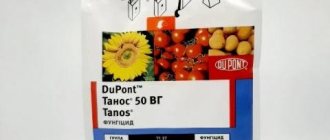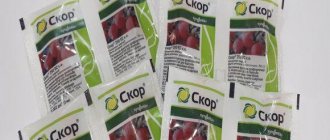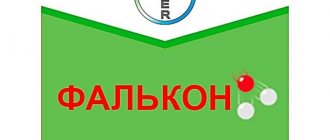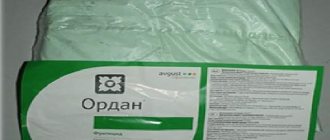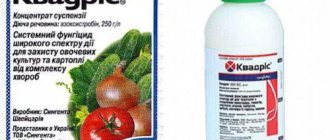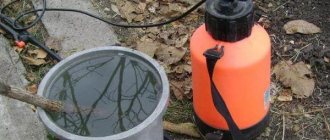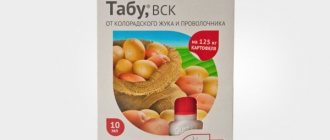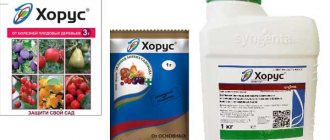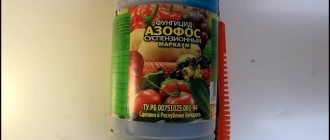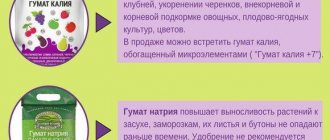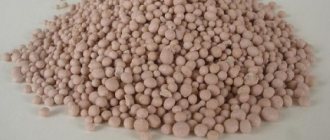Tomato diseases can deprive a gardener of his harvest. To prevent this, novice vegetable growers try to treat the beds with a variety of preparations. However, for prevention and treatment it is advisable to use a minimum of special means. It is advisable to use universal drugs. “Fitosporin” belongs to such means.
Treatment of tomatoes with Fitosporin is effective and popular among summer residents. But to prevent the drug from harming the seedlings, it must be diluted and used correctly. Read our article about how the product works, what dosages are used and what precautions are necessary.
What kind of drug is this
"Fitosporin" is a systemic fungicide used by gardeners for the prevention and treatment of various tomato diseases . It was especially loved by greenhouse owners who are constantly faced with fungal diseases.
The drug belongs to the immunomodulating agents . It increases the defense system of plants, as a result of which they independently cope with pathogens. Fitosporin also has an anti-stress effect, which is especially important during the period of planting tomatoes in beds.
Why do you need tomatoes, how does it work?
The drug is absolutely harmless to humans and plants. It contains spores of the bacteria Bacillus subtilis, which destroy dangerous pathogens that can be found not only in the soil, but also on the plant. Once in the seedling tissue, microorganisms produce fungicides and bacterial compounds that suppress the action of pathogens.
For reference . When processed, the drug covers seeds and seedlings with a thin film of beneficial bacteria, which protects against infections.
"Fitosporin" not only protects seedlings from fungi and infections . It improves immunity and heals tissues affected by the disease. The plant becomes stronger and produces a good harvest. The product is suitable for use during ovary formation and fruiting.
The drug protects against such diseases:
- powdery mildew;
- Alternaria blight;
- late blight;
- bacteriosis;
- various rots;
- scab;
- rhizoctoniasis;
- rust;
- Phomasis;
- fusarium;
- cercospora blight
Advantages and disadvantages
Fitosporin, like any other drug, has a number of strengths and weaknesses .
Advantages:
- non-toxic;
- safe for people and animals;
- stimulates the growth and immunity of seedlings;
- increases productivity up to 25%;
- applicable on all types of soil;
- does not accumulate in fruits and plants;
- suitable for treating plants in an apartment;
- does not pose a danger to pollinating insects;
- applicable at all stages of plant development;
- has no waiting period.
Flaws:
- the need to comply with breeding and storage rules;
- decreased efficiency in sunny weather.
Storage conditions
Packages with the drug are stored in a utility room at a temperature of +2 °C ... +30 °C , avoiding contact with children and animals.
The product has a shelf life of one year.
Description and composition
Fitosporin contains the bacterium Bacillus subtilis and its spores. This microorganism produces antibiotics, amino acids and immune stimulants. Bacillus subtilis is capable of displacing many pathogenic microorganisms from the soil and from the surface of plants.
The medicine is available in the form:
- Powder, packaged in 10-30 g. Each gram contains up to 2 billion active bacteria. A teaspoon contains 3-3.5 g of powder.
- Suspensions with a concentration of 1 billion bacteria per milliliter.
- Paste, packaged in 200 g. 1 g contains 100 million bacteria.
Systemic type drug. Once on the leaves, it is absorbed through the stomata, penetrates the vessels and disperses throughout the plant, reaching the farthest corners, and is not washed off by rain and irrigation water.
Several varieties of the drug are available. The most popular Fitosporin-M with humates ().
Fitosporin-M Olympic is available for sale. In addition to Bacillus subtilis, it contains:
- potassium humates,
- molybdenum,
- lithium,
- cobalt,
- copper,
- nickel.
Indications for use
“Fitosporin” is often mistakenly classified as a drug used to treat tomato diseases. However, the product has a wider range of applications.
"Fitosporin" is used for:
- seed treatment before planting;
- disinfection of seed material before storage;
- disinfection and enrichment of soil;
- processing vegetation into organic fertilizers;
- vegetable care;
- disease prevention.
When to use the drug
A product of biological origin, used to prevent fungal infection of tomatoes, to treat seeds, planting containers and substrate.
Gardeners mistakenly think that Fitosporin can serve as a medicine, but its effectiveness, especially in case of massive damage, will not be enough.
When used correctly, the product will help reduce the likelihood of developing the following tomato diseases:
- late blight, spotting, various rots;
- Alternaria blight;
- scab, powdery mildew;
- cercospora, fomoz;
- fusarium, rust, various types of mold.
Main advantages of the product:
- low toxicity, safety for humans;
- there are no restrictions on the time of processing;
- long storage period;
- effective against many pathogenic microorganisms;
- can be used in conjunction with other drugs;
- helps disinfect the soil under plants;
- increases productivity.
In order for the treatment to benefit the plant, the basic rules must be followed. The composition is not used when the sun's rays are most active, because the active substance disintegrates and Bacillus subtilis bacteria die in bright light. A decrease in effectiveness is possible if it rains on the day of treatment. It is better to repeat spraying.
Attention! If you can’t buy “Fitosporin” for any reason, it can be replaced with analogues: “Baikal M”, “Shine”, “Planriz”, “Arilin”, “Fitophtorin”.
How to prepare the drug
The drug is available in the form of powder, aqueous suspension and paste . There are no significant differences in their effectiveness; the difference lies in the duration of preparation of the solution. The suspension is often used to care for indoor or greenhouse plants. The product comes with instructions that detail how to properly prepare the solution.
Experienced gardeners prefer to prepare a functional solution , which can be diluted depending on the purpose - dilute 200 g of the product (powder or paste) in 400 g of water. The solution will not deteriorate and will be suitable throughout the season. The composition can be prepared for the whole year and stored in a glass jar, avoiding heating or hypothermia.
Important! The drug in powder form takes longer to dissolve than paste.
“Fitosporin” in powder form is diluted in this way : 5 g of the product per 10 liters of water. But often it is used in dry form for application to the soil.
How to dilute the drug in a paste ? This form is mainly used for preparing aqueous mixtures. The product is mixed with water in a ratio of 1 to 2. The solution is concentrated, so it must be diluted before use.
The drug is used in the treatment of tomato diseases .
To increase its effectiveness, it is allowed to increase the recommended norms by 2-3 times. During processing, you need to thoroughly spray the stems and leaves on all sides. The procedure is repeated after 7 days.
Does phytosporin help against late blight on tomatoes?
Reviews about the use of phytosporin against late blight on tomatoes are quite contradictory. This is largely due to the fact that many potent drugs have appeared on sale today. However, experienced gardeners with extensive experience always have its packaging on hand. When used correctly, it is an excellent multi-purpose preventative. The solution is used to wipe the inside surface of the greenhouse and its frame, spill the soil, and spray the tomatoes before flowering begins.
All these measures help protect vegetable crops from late blight. Phytosporin also helps well in the initial stages of fungal infection of tomatoes.
Composition and effect of the drug
The main active ingredient of phytosporin, or as it is called, is the living bacteria Bacilus Subtilis. Cells of Bacillus subtilis enter the vascular system of tomatoes and begin to move along the stems and leaves without stopping division. Thus, they displace pathogenic fungi from plant tissues and prevent further development of late blight.
On the shelves of hardware and garden stores, phytosporin for the treatment of tomatoes against late blight is presented in three forms:
- powdered, in packages from 10 to 300 grams;
- paste, in tubes or bags weighing from 10 to 200 grams;
- liquid, in white or green bottles.
If you follow the rules for storing phytosporin, namely, store it in an intact package in a dark place, then it will retain all its medicinal properties for 4 years.
Currently, many enterprises add various microelements to the drug. In this case, it can also act as a growth stimulator.
Step-by-step instructions for use
"Fitosporin" is used at any stage of growing tomatoes . Rules for dilution and use of the drug vary depending on the manufacturer and form of release.
Pre-sowing treatment
The drug is used to treat soil and seeds. The use of “Fitosporin” serves as a prophylaxis against diseases. In addition, it strengthens the endurance and immunity of seedlings.
How to process:
- To disinfect the soil, the drug in powder form is scattered over the surface of the bed. You can also water the soil by diluting the functional solution - 1-1.5 tbsp. l. liquid into a bucket of water.
- To treat seeds, use a diluted functional solution - 2-4 drops of concentrate per 250 ml of water. The seed material is soaked for 2-3 hours.
- When planting seedlings in a garden bed, it is recommended to soak the roots of the plant for 1 hour in the following solution: 2-4 drops of concentrate per 250 ml of water.
Watering
The first watering with Fitosporin is carried out 12 days after planting the seedlings . The product can be used regularly, alternating with regular root watering. 1 tbsp. l. The drug is diluted in 10 liters of water - this dosage is enough to treat 3 square meters. m plot.
The solution applied at the root feeds the soil, increases endurance, increases immunity and plant productivity by 25%.
Types of biological product
Fitosporin-M varieties marked “Super Universal”, “Seedlings”, “Tomatoes” and “Reanimator” are suitable for tomatoes.
"Super station wagon"
Available in two forms: suspension (paste) and powder. Suitable for:
- treating adult tomato bushes against diseases;
- soaking seeds, roots of seedlings before planting;
- disinfection of seedling soil and containers, soil in the greenhouse;
- stimulating plant growth and development.
According to reviews from experienced gardeners and research by scientists, the systemic use of Fitosporin M helps increase the harvest volume by 15-20%.
The drug is effective against a wide range of pathogenic fungi that cause various types of rot. At the same time, Fitosporin is biological, that is, completely safe.
"Seedling"
The release form is a liquid concentrate with a pronounced ammonia odor, which evaporates after dissolving in water.
Use according to the following scheme:
- 10 drops per 200 ml glass of water to treat seeds before sowing;
- 10 ml per 5-liter bottle of water for spraying the above-ground part for preventive purposes;
- 10 ml per 4 liters of water for treating seedlings against late blight;
- 10 ml per 3-liter jar of water for soaking the roots of tomato seedlings before planting in the ground.
"Tomatoes"
Powdered preparation, packaged in sachets weighing 10 g. In addition to Bacillus subtilis bacteria, the composition includes:
- microelements zinc, magnesium, boron;
- bacteria that fight pathogens of fungal and bacterial etiology;
- humic acids.
Fitosporin M Tomatoes can be used not only for the prevention of diseases, but also as feeding for seedlings, due to the content of humic acids and important microelements.
To prepare the working solution, the granular substance is thoroughly dissolved in warm (35-40 degrees), non-chlorinated water.
Dosage depending on the purpose of use:
- 5 g of powder per 10-liter bucket of water for spraying seedlings;
- 1.5 g of powder per liter of seed dressing liquid (enough to soak 1 kg of planting material);
- Packaging weighing 10 g. for a 5-liter bottle of water to treat the roots before planting in the garden.
"Reanimator"
Available in liquid form, in bottles of 200 ml. The product is used in cases where the plant needs emergency help:
- after a traumatic pick;
- for restoring tomatoes after freezing;
- with extensive disease damage.
For spraying, Fitosporin-M Reanimator is diluted in proportions depending on the degree of damage to the tomatoes, according to the instructions for use.
When to process tomatoes and how often
Spraying is carried out once every 7-14 days . During the rainy season, the number of procedures is increased to 2 times a week. Watering with Fitosporin is done once a month. At the end of June it is permissible to use it more often - at this time there is a high risk of signs of disease appearing.
In the treatment of diseases, it is allowed to use a solution of the drug up to 5 times a week.
Nuances of use in open ground
The product should not be used in open beds during precipitation . In the rainy season, you will need to increase the number of treatments.
The drug contains Bacillus subtilis bacterium, which dies under bright sunlight. Therefore, manufacturers recommend spraying plants in cloudy weather or in the evening.
In the greenhouse
In closed beds, the product is used in any weather . “Fitosporin” is used not only to prevent tomato diseases, but also to disinfect the structure.
The greenhouse and soil are treated 7-10 days before planting the seedlings. To prepare the solution, use the following dosage: 15 g of the drug per 10 liters of water.
Advantages and disadvantages
Pros of Fitosporin:
- easy to use;
- stored in warm rooms;
- does not lose beneficial properties after freezing;
- can be combined with chemical pesticides;
- harmless to humans, insects, animals;
- systemic action;
- allowed in greenhouses;
- destroys a wide range of pathogens;
- does not cause resistance;
- affordable price;
- short waiting period.
Flaws:
- the active substance quickly decomposes in bright sunlight;
- does not act as quickly and powerfully as chemical fungicides;
- difficulties with dosing.
Can the solution cause harm?
The drug is absolutely harmless to humans, animals and plants. Its bacteria act exclusively on fungal spores and harmful microorganisms.
However, when working with the drug, it is recommended to wear protective clothing, a gauze bandage and a respirator , and after the procedure, wash your hands well with soap. If the product gets into the eyes or mouth, rinse the mucous membranes thoroughly with running water.
Safety measures and storage conditions of the drug
Despite the low toxicity of the drug, adhere to basic precautions:
- wear medical gloves and a change of clothes, which should be washed after treatment;
- during root or foliar treatment, you should not eat, drink water, or smoke;
- if the solution gets on the skin or mucous membrane of the eye, rinse it immediately with clean water;
- if the solution gets into the stomach, rinse and drink any enterosorbent that will prevent poisoning.
Fitosporin should be stored in a dark place where there is no access for animals and children. The optimal storage temperature ranges from -20°C to +30°C, with a humidity of 10-20%. The total useful life of bacteria is four years from the release date indicated on the package.
Advice from experienced vegetable growers
The bacteria contained in the preparation may die if hard chlorinated water is used for dilution. Settled, non-cold water is best suited for cooking.
Many summer residents combine the use of Fitosporin with chemicals, insecticides, stimulants and fungicides . The effectiveness of a combination of drugs can be checked experimentally. If a precipitate appears when preparing the solution, this indicates that the products are not compatible.
Important! The preparation in the form of a paste contains humic acids, therefore it is not compatible with stimulants.
Drugs that combine well with Fitosporin:
- "Decis";
- "Strobe";
- "Fitolavin";
- "Quadris";
- "Fundazol";
- "Plantafol";
- "Zircon";
- "Epin."
The effect of the drug is observed only if it is used regularly . You should not expect instant results from a one-time treatment.
Popular questions
Beginning gardeners may encounter difficulties when using drugs. We have answered common questions from newbies.
When can you eat tomatoes after processing?
The drug is harmless to humans , so the fruits can be consumed immediately after processing. The only condition is that the tomatoes need to be washed well.
Is it possible to spray during flowering?
The product is used to treat plants during all periods of growth . Can be used during flowering and fruit ripening.
Reviews from vegetable growers
gardeners respond positively to the drug, noting its main advantage - the absence of harmful components in the composition.
Alexander, Krasnodar : “The drug works well at normal and high humidity. Not effective during drought.”
Nadezhda, Stavropol : I use “Fitosporin” for spraying plants during flowering and fruiting. Tomatoes, cucumbers, grapes, strawberries, wild strawberries and raspberries respond well to the drug.”
Oksana, Moscow region : “I use the drug for preventive purposes; for late blight and other diseases I use stronger chemicals.”
Fitosporin - description of the drug
Fitosporin is a microbiological preparation for protecting plants from fungal and bacterial infections, which does not contain harmful or aggressive chemicals.
Each milliliter of solution contains billions of living bacteria and spores. The biological product is effective not only for protecting tomatoes, but also potatoes, cucumbers, zucchini, eggplant, and berries.
The product is available in three forms:
- Powder is the most popular form among amateur gardeners. Fitosporin without additives is a universal remedy. Products with special labels “tomato” and “cucumber” have specific additives designed to feed a specific crop.
- Paste is a flat cake in a bag, to which the organomineral fertilizer GUMI (growth stimulator) has been added.
- Suspension is a ready-to-dilute concentrate for caring for indoor and adult garden plants.
The action of phytosporin is based on the fact that beneficial bacteria actively destroy pathogens, enveloping the plant in a living protective cocoon even when there are no external manifestations of the disease. For comprehensive protection of tomatoes from late blight and other diseases, phytosporin is recommended to be used throughout the growing season, and not from the beginning of July, when manifestations of infections are expected.
The preventive effect of the drug lies in the ability to strengthen and activate the plant’s own defenses. Fitosporin penetrates inside and spreads throughout the vascular system. Treated tomatoes gain green mass faster, bloom better and set fruit.
Note! For the effectiveness of phytosporin, the decisive condition is its correct dilution. It is important to create the most comfortable conditions for beneficial bacteria to awaken and act.
Fitosporin is effective against:
- late blight in all its manifestations
- root rot
- fungal infections
- scab
- mold
- rust
The biological product has a long shelf life (4 years) and retains its properties after freezing and thawing. Resistant to temperatures in the range from -50 to +40°C.

